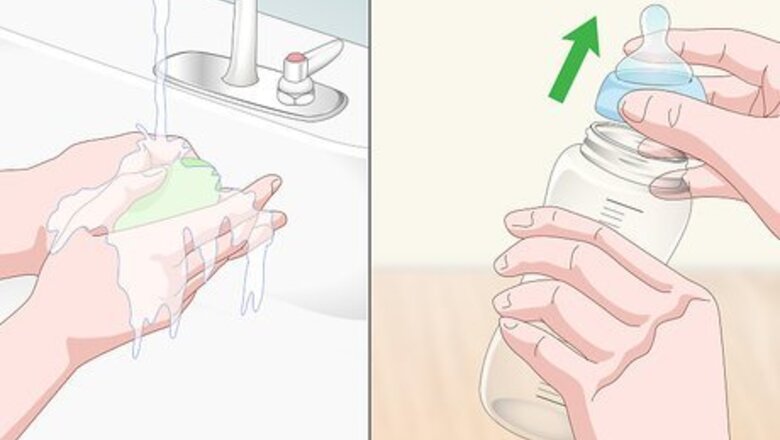
views
Cleaning the Nipples by Hand
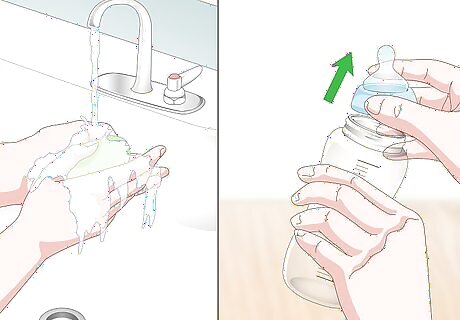
Wash your hands and take the baby bottle apart. Use soap and water to thoroughly wash your hands for at least 20 seconds. Then, unscrew the ring of the baby bottle and push the nipple out through the ring. You may also need to remove a cap or valve, depending on the type of bottle you have. Try to take apart and clean the bottle immediately after your baby has finished eating.
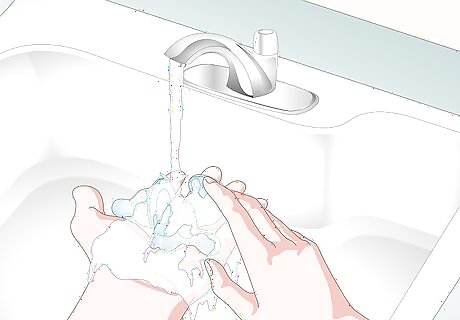
Rinse the nipple under running water. Turn the tap on and run any temperature of water that you like. Hold the nipple under the water to rinse off milk. Then, rinse any other baby bottle parts that you plan on washing.Tip: Since sinks can actually be dirty, don't rinse the nipples and set them in the sink. Instead, use a clean basin that you've designated for washing baby bottle parts. Avoid letting milk dry in the nipple because it will clog the holes and make them harder to clean.
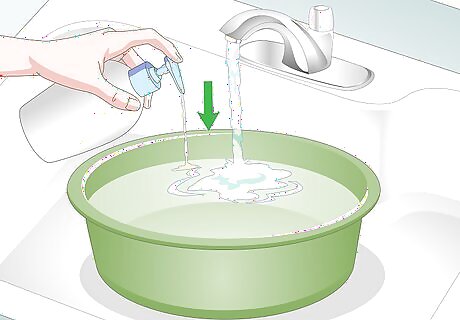
Fill a clean basin with hot soapy water. Get out a small basin that you use only for washing baby bottle parts and set it in the sink. Fill the basin with hot water and add 1 to 2 drops of dish soap. Swirl your hands in the water to dissolve the soap. You can use the dish soap you normally use to wash dishes or choose dish soap that's gentle on your hands.
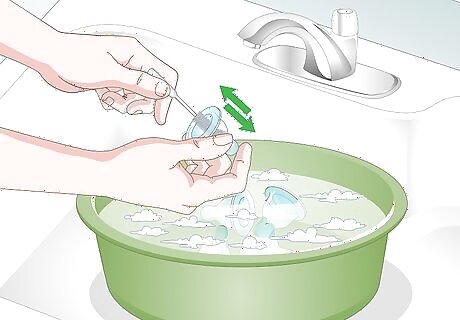
Put the nipples into the basin of soapy water and scrub them with a brush. You can also add other parts of the baby bottle that you want to wash. Then, take a cleaning brush that came with the bottles or a small wire brush with bristles at the end and scrub inside the nipple. Clean around the holes to break up any clogs. If milk dried in the nipples, you might want to soak them for a few minutes. To tell if you've thoroughly cleaned the nipple, try to squeeze water through the nipple holes. If water doesn't flow through, you need to scrub more dried milk out of them.
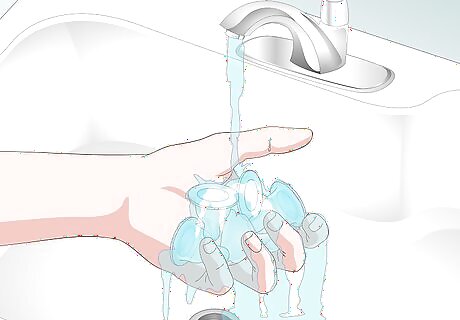
Rinse the nipples with running water. Take the nipples out of the basin and hold them under the tap. Continue to rinse the nipples until you've removed all of the soapy water. You can use any temperature of water to rinse the nipples, but they'll dry faster if you use hot water.
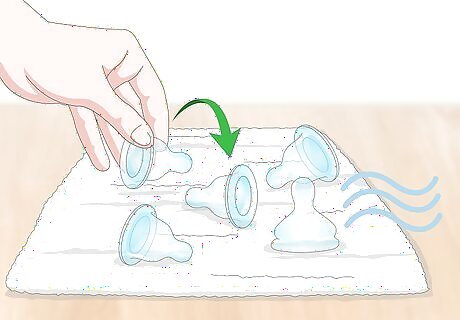
Set the nipples on a clean towel and let them air dry. Lay a clean, unused kitchen towel or paper towel on a clean counter and place the clean nipples on it. Leave the nipples and baby bottle parts to dry completely. Don't wipe or rub the clean nipples with a kitchen towel even if you're in a hurry for them to dry. Drying them with a towel will introduce germs. You can buy a small drying rack designed for little baby bottle parts. Since these allow the air to circulate, it can speed up drying time.
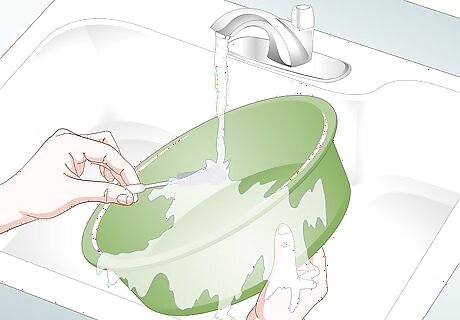
Clean the basin and brush before storing them. Dump out the soapy water and rinse it with clean water. You should also rinse the bottle brush and let them both air dry before you store them. To thoroughly clean them, run the basin and brush through the dishwasher every 2 or 3 days. If you don't have a dishwasher, you can wash the basin and brush with soap and warm water. Clean the basin and brush after every use if your baby is less than 3 months old, was born prematurely, or has a compromised immune system.
Using a Dishwasher
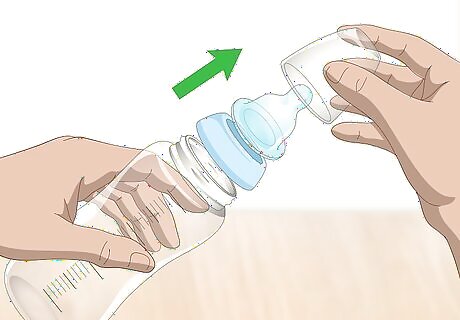
Remove the lid from the bottle and take out the nipple. Unscrew the ring from the dirty bottle and use your finger to push the nipple down towards the ring. Then, grab it from under the ring and pull it out completely.Tip: Although most baby bottles are dishwasher-safe, it's a good idea to read the manufacturer's cleaning instructions for recommendations. Depending on the type of baby bottle you're using, you might also need to remove a cap or valve. You can also wash the bottles, caps, rings, and valves in the dishwasher along with the nipples.
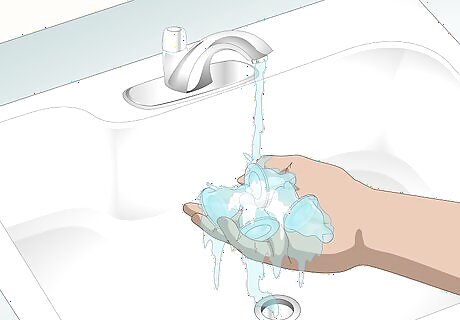
Rinse the nipple under running water. Run any temperature of tap water and hold the nipple under it to rinse away milk. Pay attention to milk that's in the holes of the nipple since you don't want milk drying in them. You should also rinse any other parts of the bottle that you plan on running through the dishwasher. Try to rinse the nipple immediately after the baby is done with the bottle even if you aren't going to be running the dishwasher right away. Rinsing will prevent milk from drying and clogging the holes in the nipple.
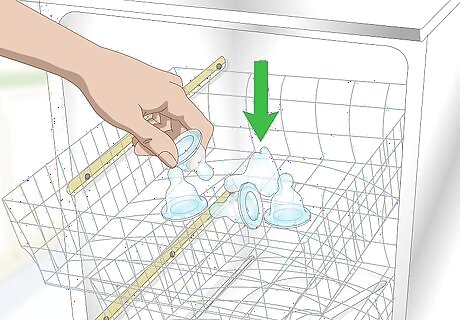
Place the nipple in the top rack of the dishwasher. If you're washing lots of baby bottle nipples or parts, consider putting them into a closed-top basket or mesh dishwashing bag so they don't fall off the rack. It's fine to load the rest of the dishwasher with dirty dishes.
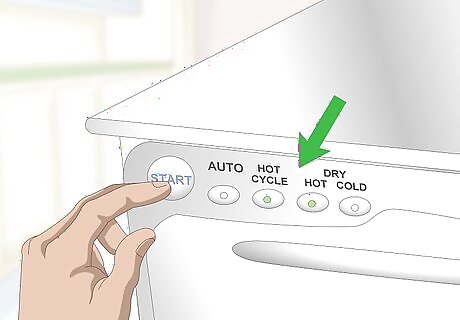
Run the dishwasher on a hot cycle with heated drying, if possible. You can select a standard cycle and the machine will wash the nipples with hot water. If your machine has the option, choose the heated dry or sanitize setting. This can kill more germs than just letting the nipples air dry.Did You Know? If you always use the dishwasher to clean the nipples, realize that silicone nipples will wear out faster than if you clean them by hand.
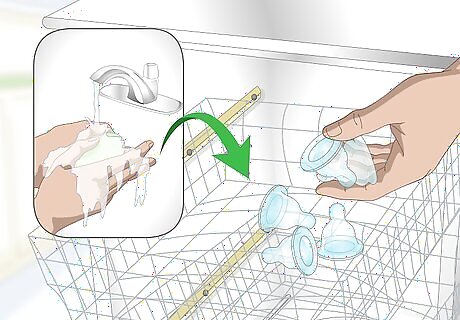
Wash your hands before you take the nipples out of the dishwasher. Use soap and water to wash your hands thoroughly. Then, open the dishwasher and remove the nipples along with any other clean baby bottle parts. Store everything in a clean space until you're ready to make a bottle. If the nipples aren't completely dry, set a clean, unused kitchen towel or paper towel on the counter. Place the nipples on the towel and let them air dry before you put them away. Avoid rubbing the towel over the nipples to dry them because you could introduce germs.
Sanitizing the Nipples
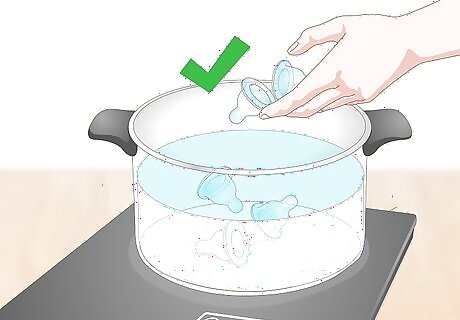
Sanitize new nipples and when your baby needs extra protection from germs. If you just purchased baby bottle nipples, it's a good idea to clean and sanitize them before preparing a bottle. Since sanitizing the nipples kills even more germs, you may want to sanitize the nipples every day if your baby:Did You Know? If you run the nipples through the dishwasher with a heated drying or sanitizing cycle, there's no need to sanitize the nipples. Is less than 3 months old Was born prematurely Has a compromised immune system
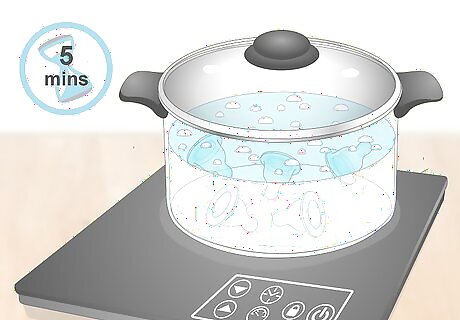
Boil the nipples for 5 minutes to sanitize them on the stove. Put the clean nipples into a small pot and pour in enough water to cover them. Turn the burner on to high and bring the water to a boil. Once the water begins to boil vigorously, set a timer for 5 minutes. To remove the nipples, turn off the burner and use clean tongs to carefully lift them out of the water. Set the nipples on a clean, unused kitchen towel or paper towel to air dry completely.
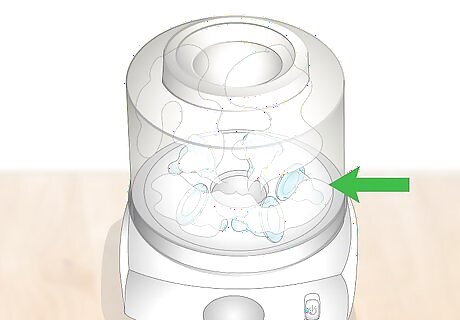
Put the nipples into a microwave or electric sterilizer to sanitize them. Buy a baby bottle sterilizer from a baby supply store and read the manufacturer's instructions. You'll probably need to put a little water into the bottom of the machine before loading it with the nipples and baby bottle parts. Cover the parts and turn the machine on so it creates steam that sterilizes the parts. Microwave steamers are a great option if you don't have a lot of counter space.
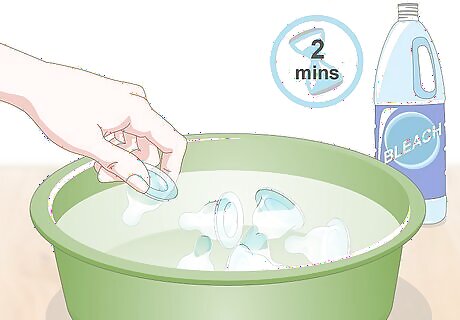
Soak the nipples in a bleach solution for 2 minutes if you can't use the other options. If you don't have access to a dishwasher, steamer, or stove, pour 4 cups (950 ml) of water into a clean basin and add ⁄2 teaspoon (2.5 ml) of bleach. Submerge the nipples in the solution and squeeze the ends so the solution gets into the holes. Soak them for 2 minutes before you use tongs to remove them.Tip: This is a good option if you don't have access to clean water. The bleach will break down and it's safe for your baby. Transfer the sanitized nipples to a clean, unused kitchen towel or paper towel and let it air dry completely.




















Comments
0 comment